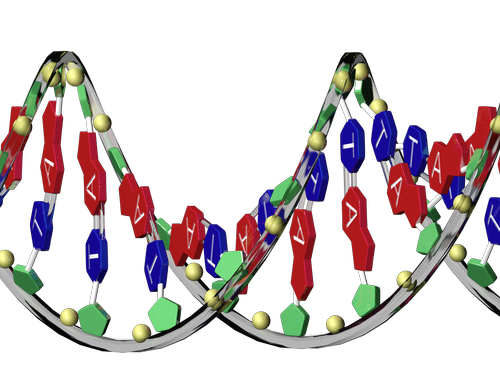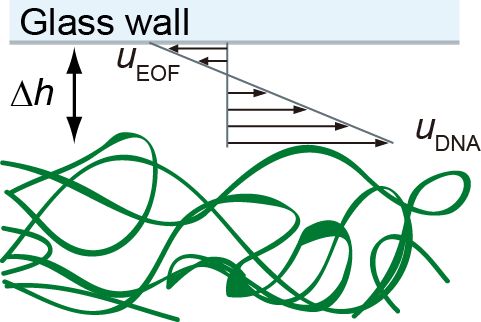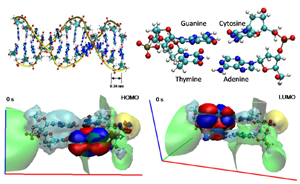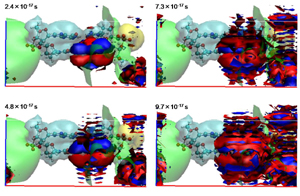Osaka University
Graduate School of Engineering Science
Kawano
Laboratory
DNA Device and Micro/Nano Scale Flow Dynamics of DNA
DNA is a Biomacromolecule which has electric conductivity through a π stacking
orbital, self assemble property and highly biocompatibility. Since it is
easy to synthesize in large quantity, DNA application is widely expected
in the fields of bioengineering. We are studying about flow dynamics and
mechanical property of DNA both by theoretical and experimental approaches.
 |
| Figure 1 poly (dA)・poly (dT) DNA |
Development of next generation DNA sequencer
is expected to use for a tailor made medicine in the future. We focus on the measurement
of single biomacromolecule in order to create the basic technology of a
sequencer. Especially flow dynamics of biomacromolecule in micro/nano scale
structure is observed by the use of fluorescent microscope.
 |
 |
Figure 2 DNA flown in nanochannel |
Figure 3 Fluorescent image of λDNA |
Electronic wavefunctions in DNA molecules which consist of G, C, A, and
T can be visualized by the ab initio methods, shown by red- and blue-colored
regions in the figures below. Furthermore, the time evolution of the wavefunction
suggests the electron flow dynamics against external perturbations. We
have developed our own methods in order to investigate the electronic responsiveness
in DNAs. [1]
 |
 |
Figure 4 Electronic distribution and electrostatic potential |
Figure 5 Dynamics of electronic wavefunction |
| You can see details in: |
| Kentaro DOI, Toru YONEBAYASHI, and Satoyuki KAWANO, Perturbation Theory Analysis for Electronic Response of DNA Base Pairs, J. Mol. Struct.: THEOCHEM, Vol. 939 (2010), pp. 97-105. |